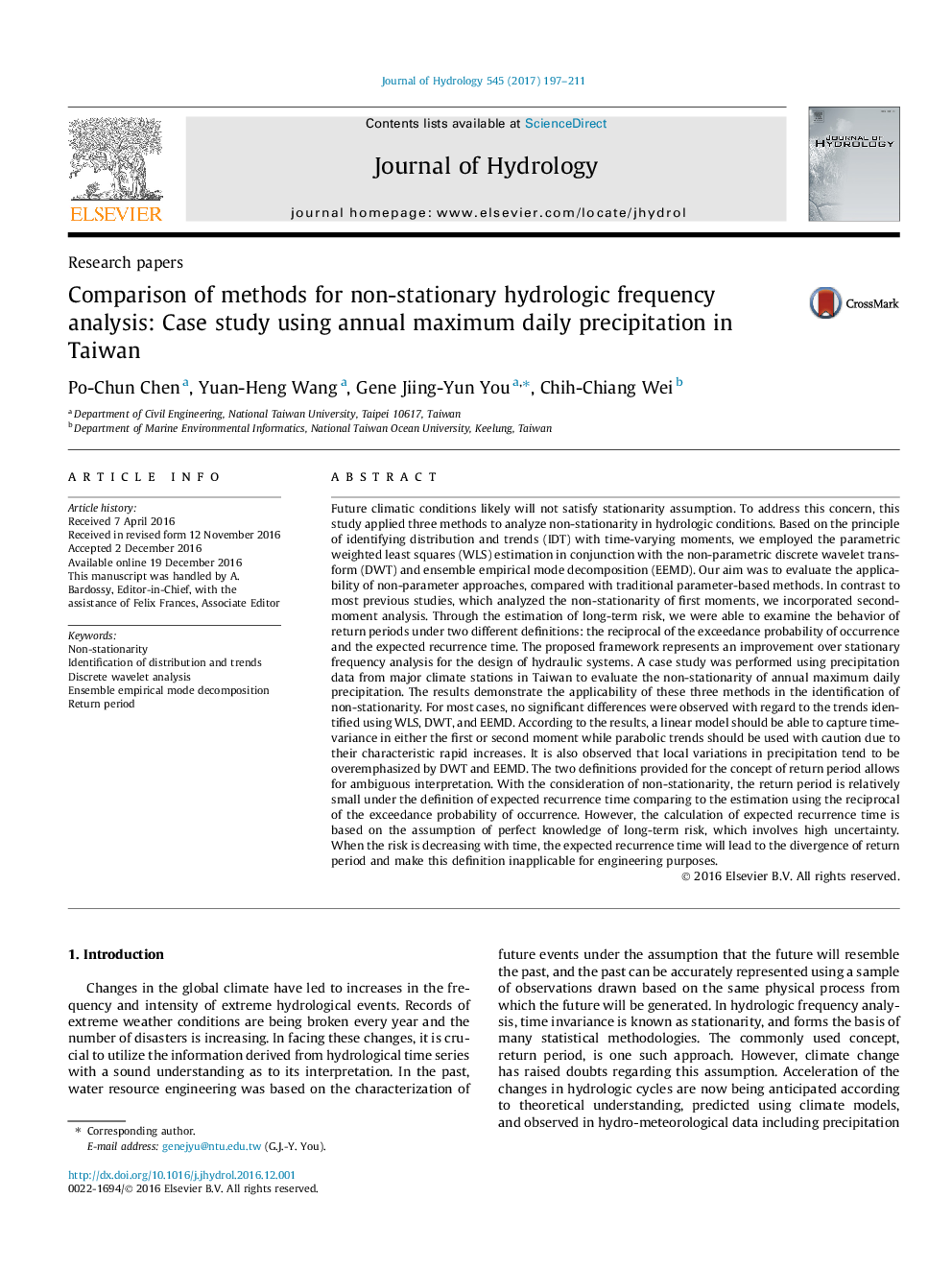| کد مقاله | کد نشریه | سال انتشار | مقاله انگلیسی | نسخه تمام متن |
|---|---|---|---|---|
| 5771396 | 1629909 | 2017 | 15 صفحه PDF | دانلود رایگان |

- WLS, DWT, EEMD, were applied to analyze non-stationarity in this study.
- Return periods under two different definitions were examined.
- Maximum annual daily precipitation analyzed using the proposed framework.
Future climatic conditions likely will not satisfy stationarity assumption. To address this concern, this study applied three methods to analyze non-stationarity in hydrologic conditions. Based on the principle of identifying distribution and trends (IDT) with time-varying moments, we employed the parametric weighted least squares (WLS) estimation in conjunction with the non-parametric discrete wavelet transform (DWT) and ensemble empirical mode decomposition (EEMD). Our aim was to evaluate the applicability of non-parameter approaches, compared with traditional parameter-based methods. In contrast to most previous studies, which analyzed the non-stationarity of first moments, we incorporated second-moment analysis. Through the estimation of long-term risk, we were able to examine the behavior of return periods under two different definitions: the reciprocal of the exceedance probability of occurrence and the expected recurrence time. The proposed framework represents an improvement over stationary frequency analysis for the design of hydraulic systems. A case study was performed using precipitation data from major climate stations in Taiwan to evaluate the non-stationarity of annual maximum daily precipitation. The results demonstrate the applicability of these three methods in the identification of non-stationarity. For most cases, no significant differences were observed with regard to the trends identified using WLS, DWT, and EEMD. According to the results, a linear model should be able to capture time-variance in either the first or second moment while parabolic trends should be used with caution due to their characteristic rapid increases. It is also observed that local variations in precipitation tend to be overemphasized by DWT and EEMD. The two definitions provided for the concept of return period allows for ambiguous interpretation. With the consideration of non-stationarity, the return period is relatively small under the definition of expected recurrence time comparing to the estimation using the reciprocal of the exceedance probability of occurrence. However, the calculation of expected recurrence time is based on the assumption of perfect knowledge of long-term risk, which involves high uncertainty. When the risk is decreasing with time, the expected recurrence time will lead to the divergence of return period and make this definition inapplicable for engineering purposes.
Journal: Journal of Hydrology - Volume 545, February 2017, Pages 197-211